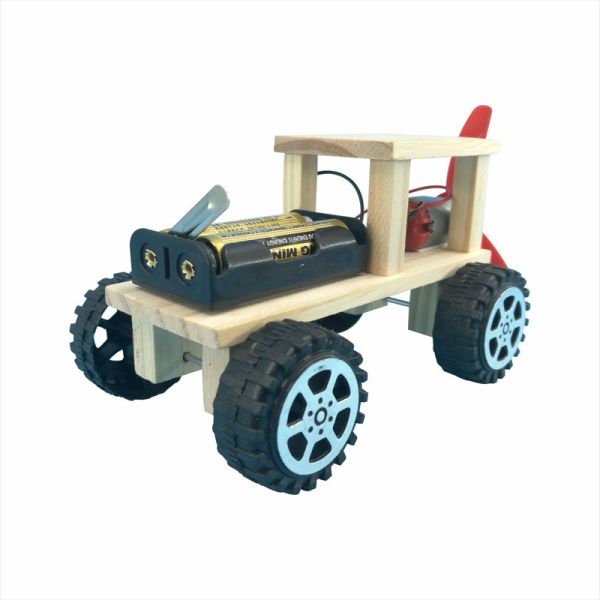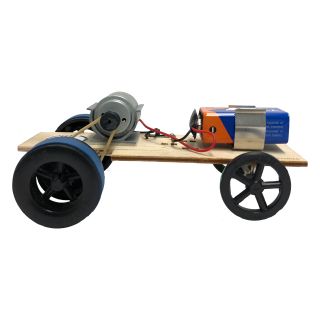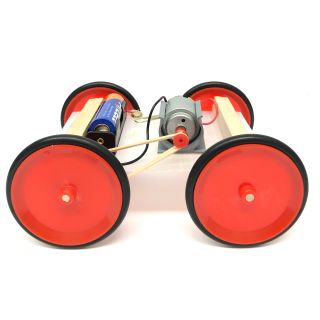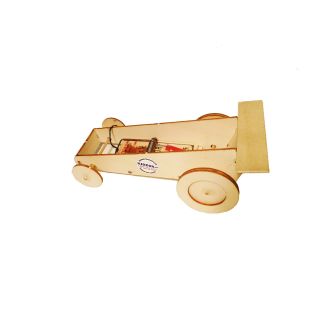All Categories
Wind Powered Tractor Kit - Cat# 80-50-W029
In stock
SKU
80-50-W029
CA$7.55
- Buy 2 for CA$6.90 each and save 9%
- Buy 6 for CA$6.30 each and save 17%
Wind Powered Tractor Kit — A Hands-On STEM Experience
Introduce your students to renewable energy and mechanical motion by building a wind-powered tractor. This kit allows learners to assemble a working model tractor driven by wind, bringing together physics, engineering, and design. It’s ideal for use in classrooms, maker spaces, and STEM workshops.
What’s in the Kit & How It Works
The kit includes components for the body and wheels, a fan (or wind-capturing blade), motor or gearing system, and assembly instructions. When wind (or a fan) drives the windmill/blade component, it transfers rotational energy through gears or shafts to the wheels, propelling the tractor forward.
Students can experiment with blade size, angle, gearing ratios, or body weight to see how each design decision affects performance.
STEM Concepts Illuminated
| STEM Area | Key Concepts | Classroom Applications & Extensions |
|---|---|---|
Renewable Energy | Wind power, kinetic energy conversion | Explore how the wind’s kinetic energy is captured and transformed into mechanical motion in the tractor. |
Mechanics & Motion | Gears, torque, rotational motion, friction | Analyze how gear ratios, friction, and torque affect speed and efficiency of the tractor. |
Engineering Design | Optimization, structural integrity, trade-offs | Challenge students to iterate their design — balancing weight, blade design, gearing, and stability. |
Physics | Forces, motion, energy loss | Investigate how forces like drag, friction, and torque influence movement; discuss energy losses. |
Environmental/STEM Integration | Sustainable technology, design thinking | Compare wind power to other energy sources; prompt students to think about real-world applications of wind-driven machines. |
Why Teachers Will Like It
Hands-On Learning: Students build a functional model that responds to wind, making abstract principles concrete.
Interdisciplinary: Encourages links between physics, engineering, design, and environmental studies.
Flexible Complexity: Works for younger students in guided mode, and for older students as an optimization challenge.
Classroom-Friendly: Compact kit suitable for group work.
Supports Inquiry: Promotes experimentation, iteration, and data collection.
Classroom Activity Ideas
Design Challenge: Divide students into teams and ask them to optimize for speed, distance, or load-carrying capability.
Blade Experimentation: Let students test blades of different sizes, shapes, or pitches and see how performance changes.
Gearing Trials: Compare different gear ratios to see trade-offs between torque and speed.
Wind Source Tests: Test performance under different wind speeds or directions (e.g. hair dryer, fan, natural wind).
Data Logging & Graphing: Have students run multiple trials, record distance vs. wind speed or design variables, and graph results.
Real-World Discussion: Explore how wind energy is used in agriculture (e.g. wind turbines, wind-driven machines) and discuss sustainability.
Bring wind power, mechanics, and creative design together in one hands-on project. With the Wind Powered Tractor Kit, students won’t just read about renewable energy — they’ll build a wind-powered vehicle and learn by doing.








